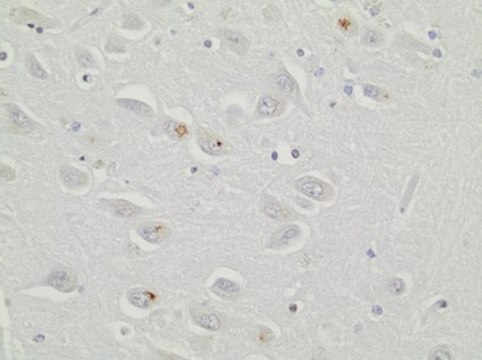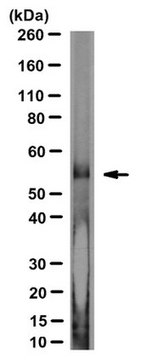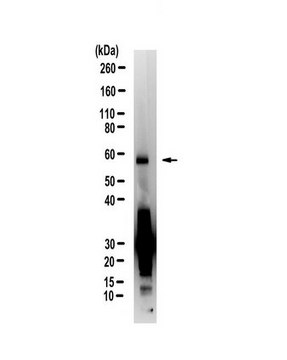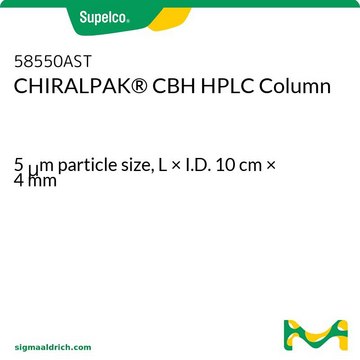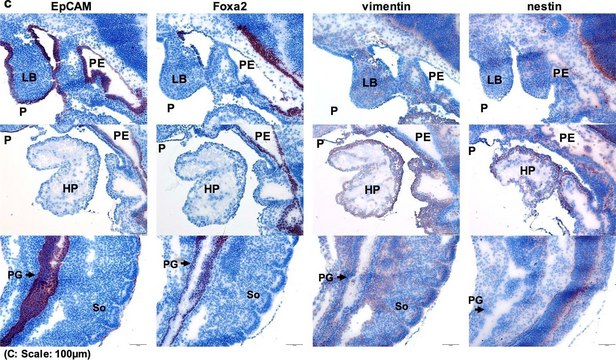ABN455
Anti-C9ORF72/C9RANT (poly-GP) Antibody
from rabbit
Synonym(s):
C9ORF72, C9RANT
About This Item
Recommended Products
biological source
rabbit
antibody form
unpurified
antibody product type
primary antibodies
clone
polyclonal
species reactivity
human
species reactivity (predicted by homology)
all
technique(s)
immunohistochemistry: suitable (paraffin)
western blot: suitable
shipped in
dry ice
Gene Information
human ... C9orf72(203228)
General description
Immunogen
(GR)8-amide
Application
Neuroscience
Neuroscience
Neurodegenerative Diseases
Synapse & Synaptic Biology
Quality
Western Blotting Analysis: 1:2000 diultion of this antibody detected GST fusion protein with 5 GP repeats in 10 µg of transfected HEK293 cell lysate.
Target description
Physical form
Storage and Stability
Handling Recommendations: Upon receipt and prior to removing the cap, centrifuge the vial and gently mix the solution. Aliquot into microcentrifuge tubes and store at -20°C. Avoid repeated freeze/thaw cycles, which may damage IgG and affect product performance.
Other Notes
Disclaimer
Not finding the right product?
Try our Product Selector Tool.
Hazard Statements
Precautionary Statements
Hazard Classifications
Aquatic Chronic 3
Storage Class Code
12 - Non Combustible Liquids
WGK
WGK 1
Flash Point(F)
Not applicable
Flash Point(C)
Not applicable
Certificates of Analysis (COA)
Search for Certificates of Analysis (COA) by entering the products Lot/Batch Number. Lot and Batch Numbers can be found on a product’s label following the words ‘Lot’ or ‘Batch’.
Already Own This Product?
Find documentation for the products that you have recently purchased in the Document Library.
Our team of scientists has experience in all areas of research including Life Science, Material Science, Chemical Synthesis, Chromatography, Analytical and many others.
Contact Technical Service
